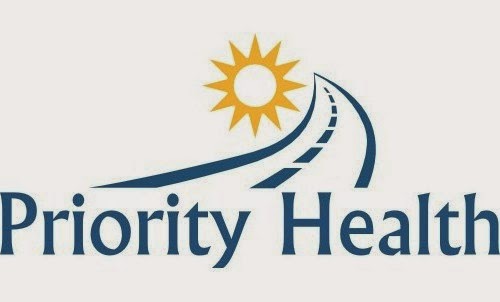Thyrotoxicosis refers to an elevated concentration of thyroid hormone as well as the related clinical manifestations. This is differentiated from thyroid storm, a life-threatening manifestation of thyrotoxicosis in which a markedly hypermetabolic state is present. Hyperthyroidism most commonly results from uncontrolled
The incidence of hyperthyroidism in the
Thyroid storm is a clinical diagnosis and, considering the acuity of this life-threatening condition, patients with thyrotoxicosis should be treated empirically when the diagnosis is suspected. Symptoms of thyrotoxicosis include weight loss, palpitations, hair loss, diplopia, chest pain, oligomenorrhea, or confusion. The physical examination reveals a hypermetabolic state, with abnormalities involving multiple organ systems. These findings commonly include hyperpyrexia, tachycardia, tachypnea, and hypertension. Other findings may include fine tremor, exophthalmos, ophthalmoplegia, pretibial edema, congestive heart failure, thyromegaly, thyroid bruit, and hyperreflexia. Laboratory studies show a low TSH level and elevated T3 and T4 concentrations. TSH is the most precise indicator of thyroid function because of the very high sensitivity of the thyroid-pituitary feedback loop, and current assays are able to detect levels of 0.02 mIU/L or less. As such, a normal TSH level largely excludes significant thyroid disease. Other laboratory findings seen in thyrotoxicosis may include hyperglycemia, hypercalcemia, leukocytosis, and elevated liver enzymes. Further testing may be indicated as part of a search for the precipitating cause of clinical decompensation, such as infection, myocardial infarction, or diabetic ketoacidosis. Electrocardiography most often reveals sinus tachycardia or atrial fibrillation. Although thyroid storm requires more rapid and aggressive therapy than thyrotoxicosis, differentiating between the two can sometimes be difficult, as it was in this patient. Burch and Wartofsky developed a scoring system to assist in making this distinction that takes into account thermoregulatory dysfunction, central nervous system effects, gastrointestinal dysfunction, the degree of tachycardia, the extent of congestive heart failure, the presence of atrial fibrillation, and the presence or absence of a precipitating event.
Cardiac complications from thyrotoxicosis include arrhythmias, congestive heart failure, and pulmonary hypertension. The most common arrhythmia in thyrotoxicosis is sinus tachycardia; however, atrial fibrillation occurs in 10-20% of patients with thyrotoxicosis, most often in patients who are older than 60 years. Risk factors for atrial fibrillation in these patients include male sex, increasing age, coronary heart disease, heart failure, and structural heart or valvular disease. Congestive heart failure in thyrotoxicosis is predominantly caused by either persistent tachyarrhythmias (tachycardia-induced cardiomyopathy) or uncontrolled hypertension as a consequence of thyrotoxicosis. Systolic dysfunction can occur as a consequence of the persistent cardiac arrhythmias, but it usually resolves once the hyperthyroid state is treated. Pulmonary hypertension can also occur in thyrotoxicosis, either as a result of a primary effect of thyroid hormone on pulmonary arteriolar resistance vessels, decompensated left heart failure, or via increased pulmonary arterial blood flow (high-output).
The differential diagnosis for thyrotoxicosis and thyroid storm may include anxiety, congestive heart failure, heat exhaustion or heatstroke, factitious disorder, neuroleptic malignant syndrome, panic disorder, septic shock, serotonin syndrome, anticholinergic or sympathomimetic toxicity, and alcohol or benzodiazepine withdrawal syndromes. Because infection is a common trigger for thyroid storm, an initial misdiagnosis of sepsis is not uncommon because of similar characteristics, such as tachycardia, fever, and altered mental status.
Management of thyrotoxicosis consists of a 5-pronged, ordered approach, targeting each step in the biosynthetic pathway of thyroid hormone and its activity on target tissues. Treatment begins with administration of propylthiouracil (PTU) or methimazole, both of which act by inhibiting new hormone synthesis. PTU has the added effect of decreasing peripheral T4 to T3 conversion. Beta-blockers are then employed to inhibit target activity of thyroid hormone. Propranolol is the preferred agent because it also blocks peripheral conversion of T4. When cardioselective agents are preferred, atenolol or metoprolol may be used. At least 1 hour after administration of PTU or methimazole, the patient may be given iodide to inhibit further thyroid hormone release. It is imperative that iodine be given only after synthesis of new hormone is blocked because iodide administration can have the undesired effect of increasing new hormone synthesis. Potassium iodide or Lugol solution of iodine is recommended. Peripheral conversion of T4 to T3 is blocked, as noted above, and dexamethasone may be used as well. Further treatment is supportive and may include acetaminophen for fever and hydrocortisone if the patient is hypotensive as a result of adrenal insufficiency. Salicylates are contraindicated because they displace bound thyroid hormone in the blood.
With regard to the management of cardiac symptoms related to thyrotoxicosis, treatment is focused on reducing adrenergic drive to the heart and restoring normal cardiac rhythm. As mentioned above, beta-blockers are very effective for rapid hemodynamic improvement. Either propranolol or metoprolol given intravenously can be used to improve heart rate control either in sinus tachycardia or atrial fibrillation. In severe cases, a continuous infusion of esmolol may be required for rate control. Amiodarone should be avoided when treating atrial fibrillation from thyrotoxicosis because of its high iodine content, which may induce or exacerbate thyroid storm. If a patient is hemodynamically unstable from atrial fibrillation, direct current cardioversion should be employed. If symptoms of pulmonary congestion appear, diuretics may be used. Other drugs for heart failure (angiotensin-converting enzyme inhibitors, angiotensin receptor blockers, and/or aldosterone receptor antagonists) are reasonable agents in patients who have depressed left ventricular systolic function. Anticoagulation is recommended for patients in atrial fibrillation secondary to thyrotoxicosis. The 2006 American College of Cardiology/American Heart Association/European Society of Cardiology (ACC/AHA/ESC) guidelines recommend anticoagulation with warfarin to an international normalized ratio of 2.0-3.0 until the patient is euthyroid, after which recommendations and risk stratification are the same for atrial fibrillation without thyrotoxicosis. Of note, PTU, methimazole, and iodide solutions are all classified as pregnancy class D and, as such, should not be used in pregnancy.


No comments:
Post a Comment